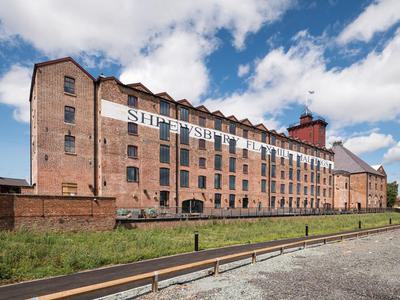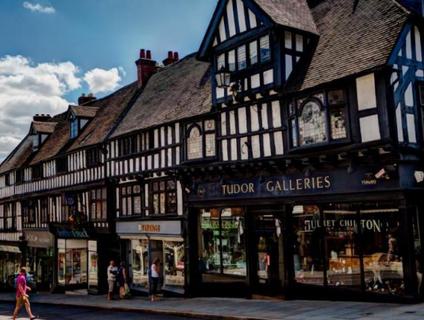- Features
- Historic Architecture in Shrewsbury
Historic Architecture in Shrewsbury

Shrewsbury Castle
Shrewsbury Castle and Shrewsbury Abbey are the town's two oldest landmarks. They were both built by Roger de Montgomery, William the Conqueror's right hand man, but the Castle that you see towering above the town today was rebuilt by Edward I, two hundred years later. Shrewsbury Castle houses the Shropshire Regimental Museum and has memorabilia from the 1700s as well as a modern army display. Climb the walls of the castle for amazing views across Shrewsbury.
Tudor Shrewsbury
In the depths of Shrewsbury's quirky streets, Tudor craftsmen carved rebellious characters in the walls of the half-timbered mansions -a tradition that is still alive and well. In fact, if you look closely at some of the buildings on the High Street today, you may spot Margaret Thatcher, Michael Heseltine or Mick Jagger staring back at you.

Town Walls
Shrewsbury's ancient town walls were first built as defensive walls between on 110 and 1135, under the 3rd Norman Earl of Shrewsbury, Robert de Belesme. You can walk or drive along the walls and en route you'll find the last remaining 14th-century watchtower, which overlooks the River Severn. The tower is owned by the National Trust and opens just a few days of the year. Find opening times on the National Trust website.
Shrewsbury Flaxmill
Ditherington Shrewsbury Flaxmillmill, Shrewsbury is the oldest iron-framed building in the world and is proudly known as "grandfather of skyscrapers" despite being only as tall as a modern five-story building!
Today it's Grade I listed and, although derelict, is in the safe hands of English Heritage. Plans to transform the site into homes, offices and shops were given approval in October 2010.
The Flax Mill's architect was Charles Bage, who designed the mill using an iron-framed structure, inspired by the work of William Strutt.
